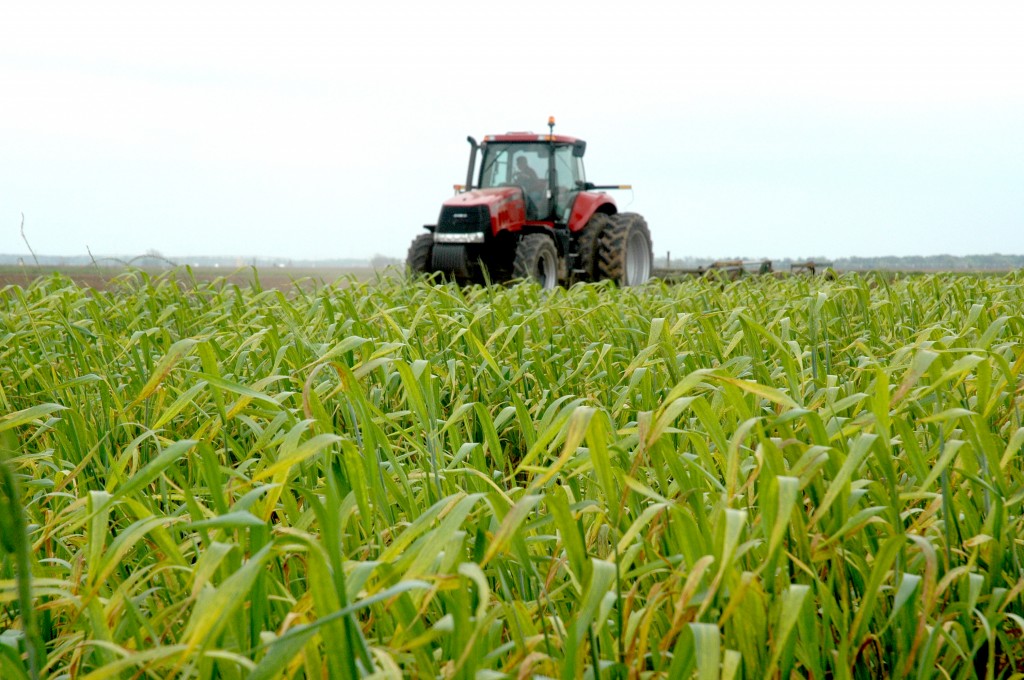Report analyzes record-high fertilizer prices
Texas A&M Agricultural and Food Policy Center projects 80% increase in 2022
Farmers and economists are wringing their hands on how to get a handle on record-high fertilizer prices heading into the 2022 crop year, and a new report compiled by the Agricultural and Food Policy Center at Texas A&M University suggests prices may not be done going up due to several factors.

Joe Outlaw, Ph.D., co-director of the Agricultural and Food Policy Center and Texas A&M AgriLife Extension Service economist, told farmers at the Blackland Income Growth Conference in Waco that fertilizer prices could escalate as much as 80% this year as supply and demand gyrate at never-before-seen levels.
A recently completed AFPC report, which analyzed the economic impacts of higher fertilizer prices on 64 representative farms, was compiled from a study initially requested by U.S. Rep. Julia Letlow, R-La. Outlaw said producers are not only experiencing sticker shock, but may see product shortages.
“Coupled with current COVID supply chain issues, this will further stress the production environment for agriculture across the country,” Outlaw said.
The fertilizer report is the most recent in a series of analyses by AFPC, which has previously released impact reports on supply disruptions to the U.S. cattle market and proposed estate tax legislation.
Rocketing fertilizer prices
The AFPC report found that as the nation continues to maneuver through supply chain disruptions and agricultural input availability, there are impacts on both fertilizer availability and costs. Last August, the Food and Agricultural Policy Research Institute in Missouri projected only a 10% increase in fertilizer prices in its forecast model, but recent spot prices have forecasts reaching as high as 80% more for the 2022 planting season.
Anhydrous ammonia increased by as much as $688 per ton or $86,000 per 1,000-acre AFPC representative farm through October 2021. The AFPC representative farms are from across the country and are used to calculate and project potential implications on future production.

“The current farm safety net is not designed to address these types of rapid production cost increases, which will continue to be a growing concern for farmers across the country, creating an emerging need for assistance,” Outlaw said.
The report found that the largest whole-farm impact would fall on AFPC’s feed-grain farms at an average of $128,000 per farm and the largest per acre impact would hit AFPC’s rice farms at $62.04 per acre.
AFPC economists went back to the 1980s, finding that fertilizer prices typically tend to rise as corn revenues increase.
Grain market, production implications
Jason Johnson, Ph.D., AgriLife Extension economist, Stephenville, said during the Blacklands Income Growth conference that grain farmers really need to do some crop budget forecasting for 2022.
Grain farmers will not only have to cope with record-high fertilizer prices, but also price support pressure from carryover supplies of grain coupled with drought in some of the major wheat production areas.
“If fertilizer prices are way up, how can you (as a farmer) reduce costs?” Johnson said. “Make sure you are not wasting fertilizer and that you are being very strategic in your crop management planning.”
With higher fertilizer prices, Johnson said farmers are going to have to be increasingly mindful of their crop production budgets. He also suggested that to cope with inflation, grain farmers should consider putting some of their cash to work such as buying input needs ahead of time.
“Also, when was the last time you we had an increasing interest-rate environment?” Johnson said. “What about experiencing four interest rate hikes within a year? Do you have anything financed with a variable interest rate? 2022 is going to be an increasing rate environment. How is that going to impact your operation and net revenue?”
He said farmers can counter with locking in future contracts by selling a portion of their crop throughout the year.
“Pencil out your cost exposure,” Johnson said. “Look at what your costs are going to be in relation to relative profit. Crop budget forecasting can be used to your advantage.”


